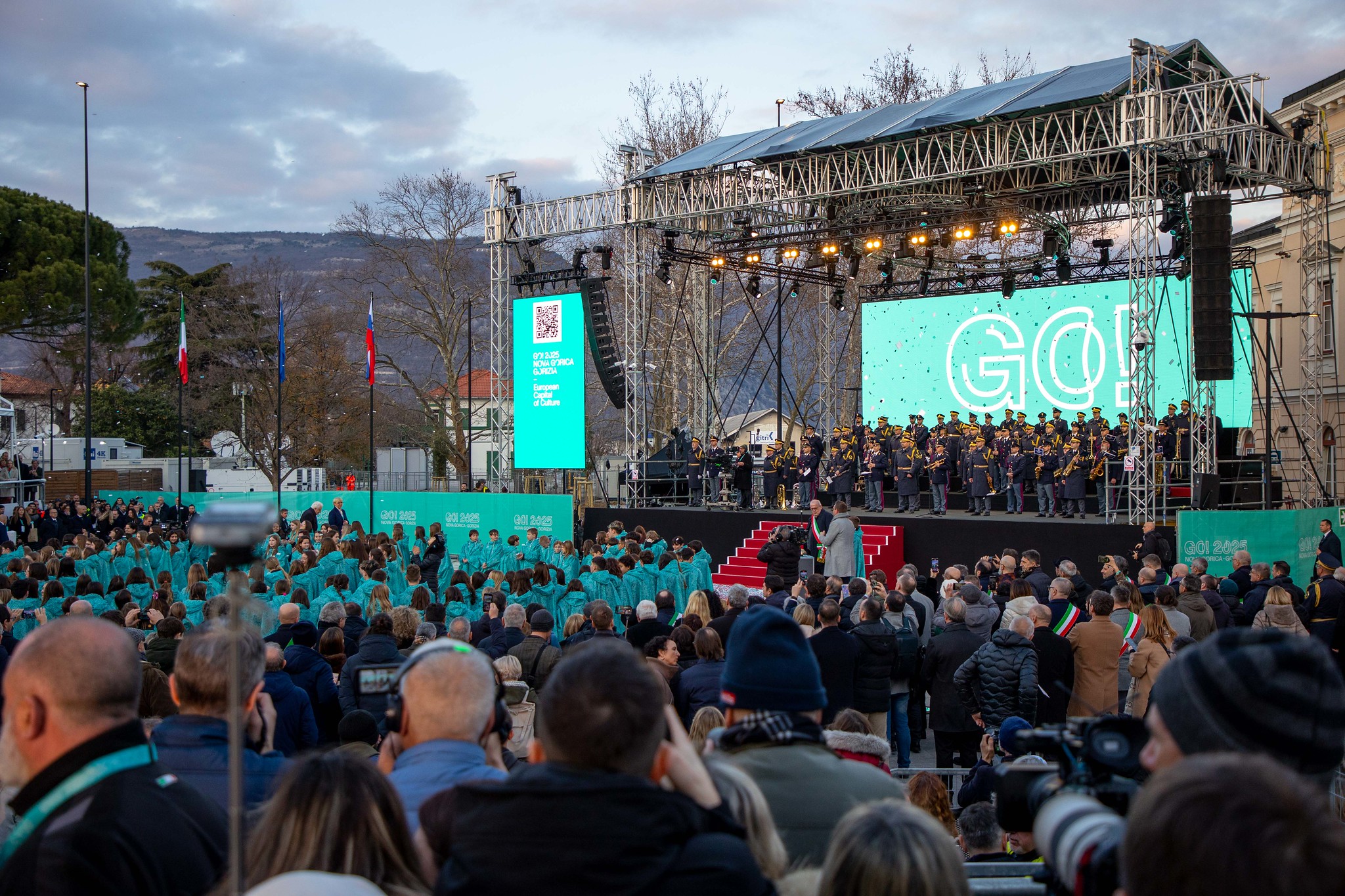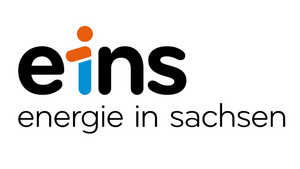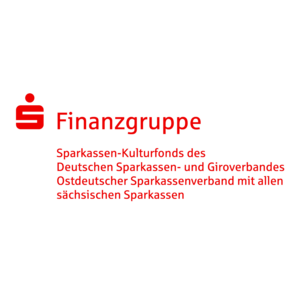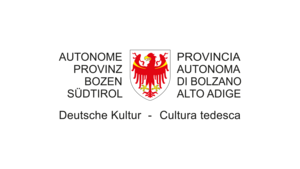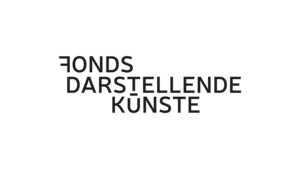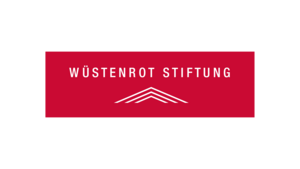On 8 February, the European Capital of Culture year was opened in the Slovenian-Italian border towns of Nova Gorica and Gorizia. Together with Chemnitz, they share the title of European Capital of Culture this year. For the first time in history, two cities from different countries share the title of European Capital of Culture. A delegation from Chemnitz accompanied the opening in the partner European Capital of Culture three weeks after the start of the German Capital of Culture year. Lord Mayor Sven Schulze, Mayor of Culture Dagmar Ruscheinsky and the management of the European Capital of Culture Chemnitz 2025 gGmbH, Andrea Pier and Stefan Schmidtke, took part in the celebrations.
The main ceremony with speeches by high-ranking political guests, including Slovenian President Nataša Pirc Musar and Italian President Sergio Mattarella, took place on Europe Square, which is located on the territory of both countries. EU Commissioner Glenn Micallef awarded the Melina Mercouri Prize, endowed with 1.5 million euros, to Nova Gorica - Gorizia, just as he had done in Chemnitz on 18 January.
Symbolic reunification with a borderless parade
The first part of the opening began in the morning with a cross-border parade consisting of 1,400 participants from local associations, Slovenian organisations from Italy and guests from twin towns, as well as speeches by the two mayors Samo Turel (Nova Gorica) and Rodolfo Ziberna (Gorizia). On the square in front of the town hall and the Slovenian National Theatre of Nova Gorica, the day reached its artistic climax - the grand opening show. Cultural performances and projections on the facades of the surrounding buildings created a unique atmosphere. The Mayor of Chemnitz, Sven Schulze, was also involved in the production with a video message.
The two European Capitals of Culture for 2025 differ significantly in size: while Chemnitz has around 250,000 inhabitants, Nova Gorica and Gorizia have a combined population of around 47,000. Matej Arčon, the Deputy Prime Minister, emphasised that he never feared that Nova Gorica and Gorizia would be too small or too weak to become European Capitals of Culture. "Thanks to the people - thanks to you, these two cities will always be great. Admittedly, we were brave in this decision, but luck is with the brave," he said.
Divided city - shared history
Under the slogan GO! Borderless, the European Capital of Culture refers to its eventful history. in 1947, Gorizia was literally divided into two halves after the Second World War: One side fell to Italy, which had lost the war, the other to Yugoslavia, one of the victorious powers. Houses, streets, stables and even a cemetery were cut up by the Treaty of Paris. Following these agreements, the town of Nova Gorica was created, and the border remained a strictly guarded dividing line in the centre of the town for a long time. And so the townscape also differs: on the Italian side, the historically characterised Gorizia, first mentioned in historical sources in 1001, and on the Slovenian side, a modernist urban project by architect Edvard Ravnikar, a student of Le Corbusier. Despite the division, the two cities were not completely cut off from each other during the Iron Curtain era: passenger tickets enabled regular border crossings, but were also used for smuggling. These memories are still alive among many locals and can be relived by visitors to the Capital of Culture on smuggling tours along the border.
Programme without borders
The European Capital of Culture Nova Gorica - Gorizia invites you to thousands of initiatives, concerts, theatre performances, film screenings, dance events and exhibitions in 2025. One of these is "Andy Warhol. Beyond Borders", which can be seen at Palazzo Attems Petzenstein in Gorizia until 4 May. With 180 works, the show traces the artistic career and life of the famous American artist. Iconic works such as Campbell's Soup, the Flowers series and the Marilyn portraits, as well as depictions of famous personalities such as Jackie Kennedy, Muhammad Ali, Grace Kelly and pop-cultural figures such as Superman and Mickey Mouse, demonstrate Warhol's ability to transform mass culture into timeless icons.
The European Capital of Culture 2025 programme is an impressive example of cross-border cooperation and shows how art and culture can build bridges between people and cities. This also applies to the close connection between the European Capitals of Culture 2025 Chemnitz and Nova Gorica/Gorizia. A central joint project is the conference "40 Years European Capital of Culture", which Chemnitz is organising together with Nova Gorica/Gorizia. Former, current and future European Capitals of Culture will reflect on the development of the programme. In addition, the white paper "40 recommendations from 40 years of ECoC" with impulses for future European Capitals of Culture will be presented. In addition, cooperation in various cultural areas will continue. The cooperation between Makers United and the Xcenter will be further intensified. The multimedia exhibition "History of Citizens" documents life stories from Chemnitz and Nova Gorica/Gorizia. The renowned pianist Alexander Gadjiev, cultural ambassador of Nova Gorica/Gorizia, will give a concert at Villa Esche on 14 February. Nova Gorica will also be the starting point of the European Peace Ride 2025. And with the support of the EU Japan Festival, a Japanese artist will be working with young people in both cities on a manga project that will be presented at the Kosmos Festival.
